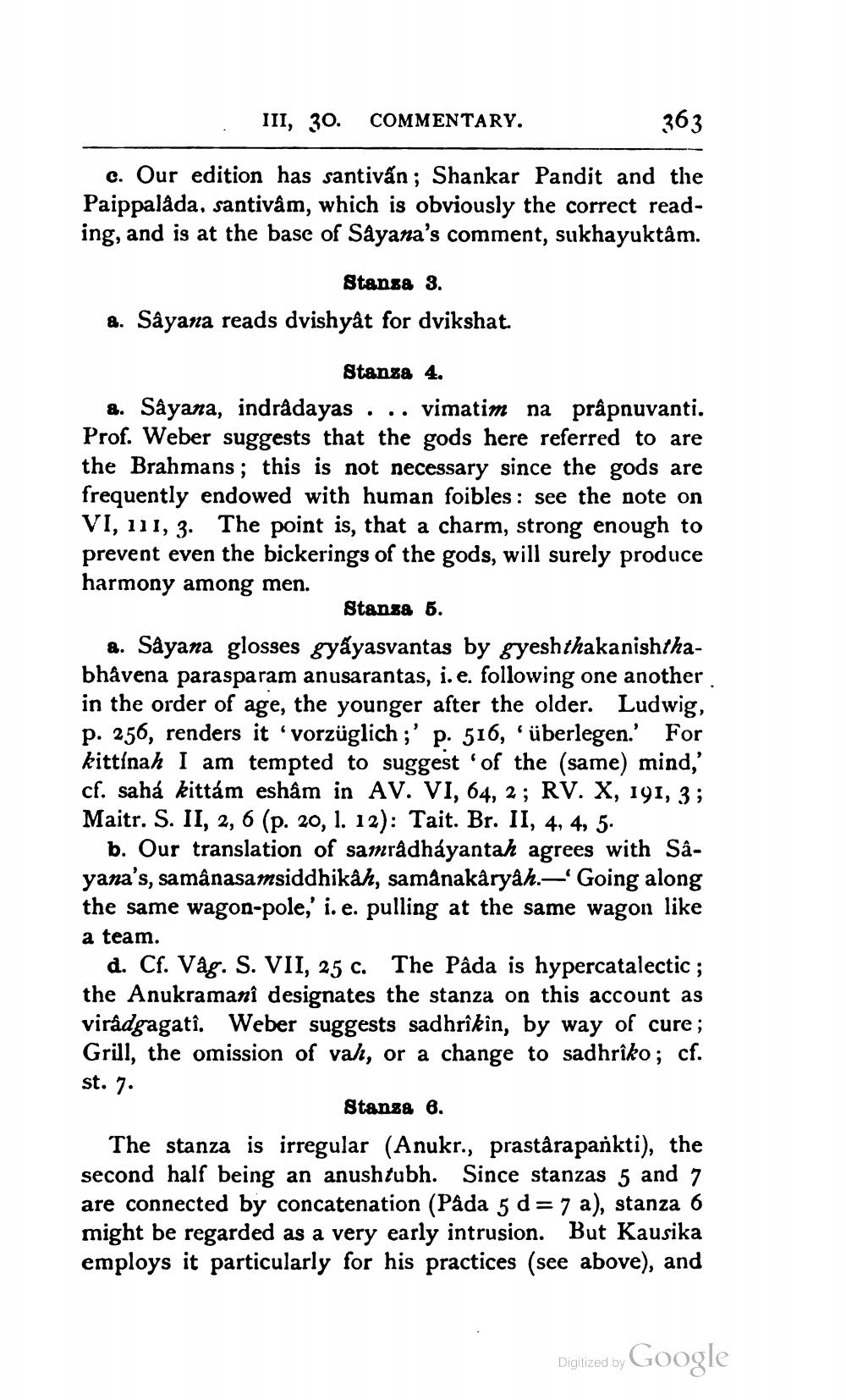________________
III, 30. COMMENTARY.
363
c. Our edition has santivấn ; Shankar Pandit and the Paippalada, santivâm, which is obviously the correct reading, and is at the base of Sayana's comment, sukhayuktâm.
Stansa 3. a. Sâyana reads dvishyat for dvikshat.
Stanxa 4. 8. Sayana, indradayas . .. vimatim na prâpnuvanti. Prof. Weber suggests that the gods here referred to are the Brahmans; this is not necessary since the gods are frequently endowed with human foibles : see the note on VI, 111, 3. The point is, that a charm, strong enough to prevent even the bickerings of the gods, will surely produce harmony among men.
Stanza 5. a. Sayana glosses gyáyasvantas by syeshthakanishthabhävena parasparam anusarantas, i.e. following one another. in the order of age, the younger after the older. Ludwig, p. 256, renders it vorzüglich ;' p. 516, überlegen. For kittinah I am tempted to suggest of the (same) mind,' cf. sahá kittám eshâm in AV. VI, 64, 2; RV. X, 191, 3; Maitr. S. II, 2, 6 (p. 20, l. 12): Tait. Br. II, 4, 4, 5.
b. Our translation of samrådháyantah agrees with Sâyana's, samânasamsiddhikâh, samanakâryâh.—'Going along the same wagon-pole,' i. e. pulling at the same wagon like a team.
d. Cf. Våg. S. VII, 25 C. The Pâda is hypercatalectic ; the Anukramani designates the stanza on this account as virådgagatî. Weber suggests sadhrîkin, by way of cure; Grill, the omission of vah, or a change to sadhrîko; cf. st. 7.
Stanza 6. The stanza is irregular (Anukr., prastarapankti), the second half being an anushtubh. Since stanzas 5 and 7 are connected by concatenation (Pada 5 d= 7 a), stanza 6 might be regarded as a very early intrusion. But Kausika employs it particularly for his practices (see above), and
Digitized by Google




